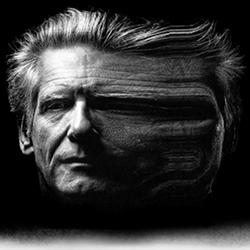
TIFF’s With Blood On His Hands – The Films of Nicolas Winding Refn Review: Drive (2011) - NP Approved

Cast: Ryan Gosling, Carey Mulligan, Bryan Cranston
Director: Nicolas Winding Refn
Country: USA
Genre: Crime | Drama
Official Trailer: Here
Editor’s Notes: The following review is part of our coverage for TIFF’s With Blood On His Hands – The Films of Nicolas Winding Refn which runs from October 24th to November 5th at TIFF Bell Lightbox. For more information on upcoming TIFF film series visit http://tiff.net and follow TIFF on Twitter at @TIFF_NET.
The car, and more specifically, the act of driving is one of the most resonant existential metaphors in pop culture. People often make the mistake of thinking driving is about speed, but it isn’t, not really. Driving is about control, about being able to guide yourself, to escape from the things that seek to exert control over you, about the possibility of giving up that control to someone you trust. The act of driving is an extension of the driver, an expression of their worldview and their approach to life. It is telling, then, that the title of Nicholas Winding Refn’s 2011 film is more than just a descriptor; it’s a command. The film could have been called The Driver (although, to be fair, there is a film with that title already), but it isn’t. It is a message to the audience as much as a reflection of the main character’s outlook. Its telling us to Drive.
A noir film that strips the genre to its diamond core, the film is also infused with its protagonist’s quiet, contemplative, yearning romanticism.
A noir film that strips the genre to its diamond core, the film is also infused with its protagonist’s quiet, contemplative, yearning romanticism. Drive follows a man with no name (Ryan Gosling) who is the perfect picture of the existential hero: a quiet stoic with no known past or attachments, defined only by his actions and the code by which he lives. This quintessential noir hero walks into a story his archetype is all too familiar with: a pretty girl in trouble and a gangster looking to get paid. Our hero becomes infatuated with that girl, his next-door neighbor (Carey Mulligan) and becomes drawn into a scheme by her convict husband that goes awry and throws his perfectly calibrated life into disarray.

Drive mines the basic noir template for parts, but it has a strong sense of style that comes to represent the torrent of emotions running just below the surface for its characters. From its opening credits that feel torn out of a late ‘80s B-movie (or, honestly, Grand Theft Auto: Vice City) to its stellar soundtrack, the film pulses with emotion even as its characters are largely defined by how they act rather than how they feel. The film’s unofficial theme song, “A Real Hero” by College, becomes an emotional wellspring that runs as an undercurrent to all that occurs, defining what our protagonist strives for, even if he never comes out and says it himself. The movie is also a marvel of economical editing; not a single shot is superfluous here, nor does any scene drag even a moment too long. This is a propulsive ride that is far more concerned with the motives and morals of its characters than it appears on its surface.
Drive is the apotheosis of the marriage between Refn’s stylistic boldness and its thematic resonance. This is a film where the line between thought and action, between the action and its representation, is blurred to the point it almost completely disappears.
The quick, economical staging and editing reflect the outlook of The Driver, a man who does what he needs to do exactly when he needs to do it. He wastes no time, brooks no indecision, and every word he speaks drips with significance for how rarely they come. Not a second or a shot is wasted in bringing us into his world. Drive is the apotheosis of the marriage between Refn’s stylistic boldness and its thematic resonance. This is a film where the line between thought and action, between the action and its representation, is blurred to the point it almost completely disappears. The Driver is what he does, and Drive becomes a study of the way his actions make up a man far more complex than first meets the eye.
Though the film is occasionally shockingly violent, it is more interested in developing a mood and allowing us to contemplate actions the way its characters do. Drive captures the loneliness of a man living outside the law, torn between a sense of alienation and the strong freedom he retains by living the way he chooses rather than the way society dictates. The movie is also stacked with a phenomenal supporting cast—in addition to Mulligan, it features a stellar supporting performance from Albert Brooks as a pragmatic sociopath, and phenomenal smaller turns from Bryan Cranston and Christina Hendricks. Drive is a film of stark power and undeniable cool, a movie with a great sense of itself and of the man at its center. Drive is a film about what our choices say about us as people, how they come to define us and ultimately subsume how we think of ourselves. By eliminating the line between his self-conception and his action, The Driver lives a fully authentic life, and he invites us to do the same. It’s one thing to dream of the open road, to imagine yourself an explorer or an adventurer. It’s quite another to take the wheel and drive.
Related Posts
![]()
Jordan Ferguson
![]()
Latest posts by Jordan Ferguson (see all)





























